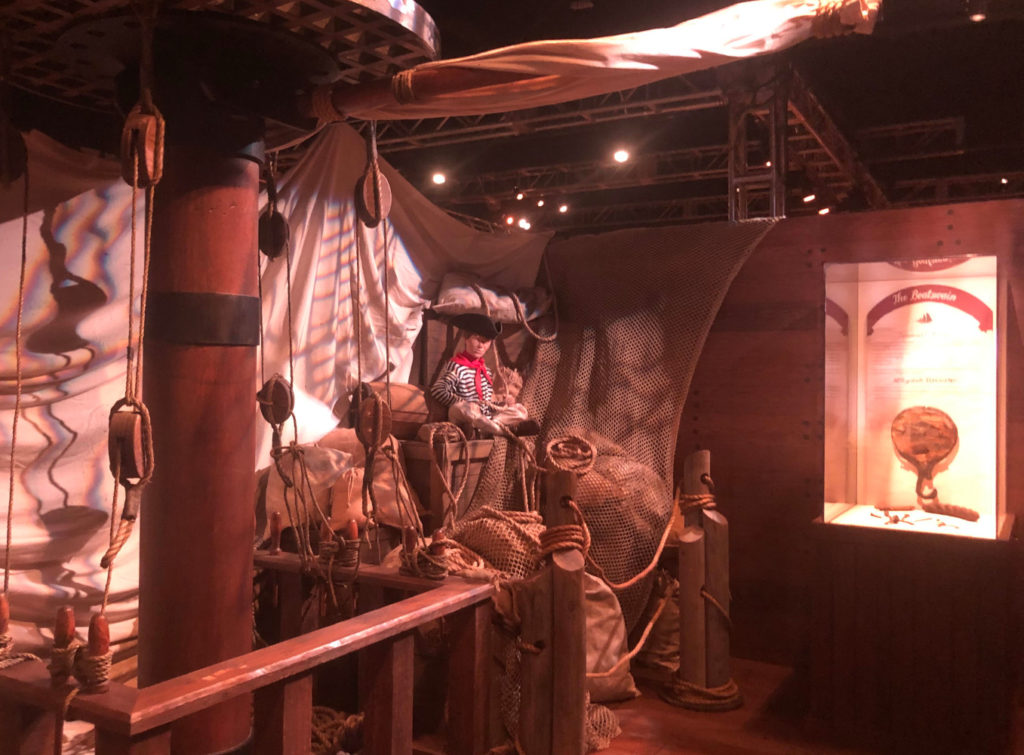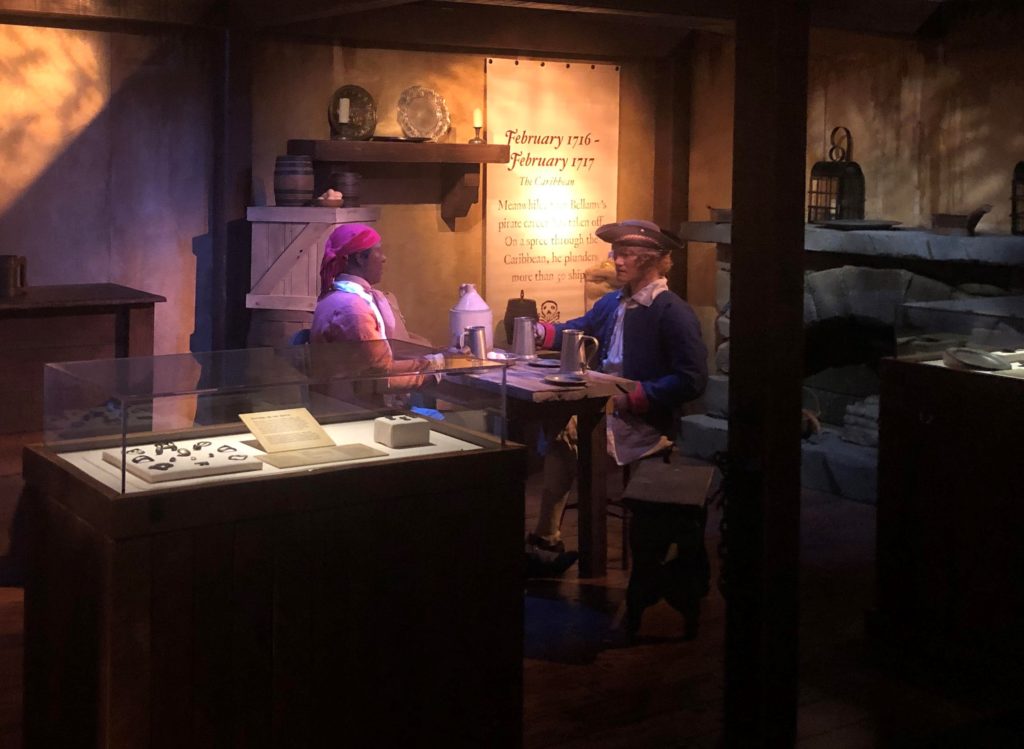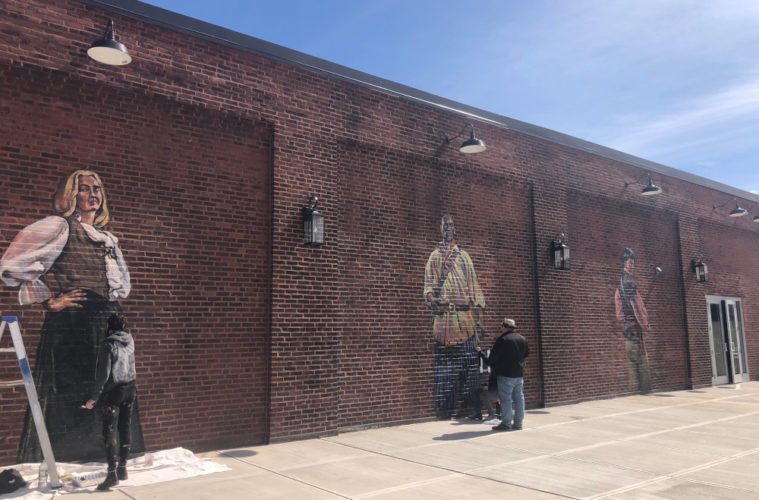On April 9 at 1 p.m., a new museum opens in downtown Salem. The Real Pirates museum tells the story of the Whydah Gally, a pirate ship that ran aground off the coast of Cape Cod in 1717, leaving behind tens of thousands of pounds of gold and silver. These artifacts and more will be on display at the new exhibit.
The Whydah (pronounced WIH-duh) shipwreck was lost at sea for over 250 years until underwater archaeological explorer Barry Clifford found the remains in 1984. The wreck’s remains were identified beyond a shadow of a doubt when his team pulled up a bell from the ocean floor inscribed with “THE WHYDAH GALLY 1716,” making the Whydah the only verified pirate shipwreck ever found. The Whydah Pirate Museum in West Yarmouth is the only other museum dedicated to displaying artifacts from the wreck.
Real Pirates walks visitors through the Whydah’s short but impactful timeline, along with the story of its captain, 26-year-old “Black Sam” Bellamy, the highest earning pirate of all time, and his love affair with Maria Hallet, known as the “Witch of Wellfleet.” Through artifacts, replicas, and tidbits of information, guests learn the story of the Whydah, from its beginnings in the slave trade, to its voyages manned by pirates, its fateful wreck, and its eventual discovery nearly 40 years ago. “It’s a great story and our job is to bring it to life,” says Bill Golden, director of Real Pirates. “They made history, and we have to make it real.”

A dark history
The exhibit opens with the history of the ship itself—the Whydah was built as a slave ship, named after one of the biggest slave trading ports in Africa in the eighteenth century, Ouidah. “It’s important to understand the cruelty that was involved in this trade,” says Golden, explaining the significance of detailing the Whydah’s grim background.
While it was built to carry over 300 enslaved people from Africa to the Caribbean on each journey, it only made that trip once—the ship was intercepted by Sam Bellamy and his pirate crew on its maiden voyage, during the last leg of its triangle trade route.
Pirates of the eighteenth century, unlike the rest of the maritime world that was dominated by the slave trade at that time, ran an egailitarian society, declaring themselves “equal and free among themselves,” says Golden. “You sign the [pirate articles], you get an equal vote and equal share of the treasure. For the first time in history, Africans, Europeans, and Native Americans were in a single society where they were all equal,” says Golden. “Never happened before, and it hasn’t happened since.” When they wrecked off the Cape, the crew was supposedly bound for Maine, aiming to set up a republic like pirates had in the Bahamas.
Real Pirates has artifacts galore, most of which came from the Whydah’s wreck itself and offer a special glimpse into the life of a real pirate in the 1700s. From the cannons on board the ship to the plates they ate off of to the tools they used for navigation, each artifact belonged to an actual pirate. “Some of these things were last worn by somebody 300-plus years ago,” says Carolyn Shapiro, managing director of Real Pirates. “Or you realize wow, someone was hammering with this hammer 300 years ago. It’s a piece of Americana.”

Some of the treasure guests can even touch, maybe while pondering which pirates might have held those same coins. You’ll see ornate pistols and other weapons used by the crew of the Whydah, but you’ll also come across artifacts like gaming tokens and other recreational items. “These people were human beings. They went fishing… they played cards,” says Golden.
Adding to the humanity of these folks, you’ll read about the history of a few of the Whydah’s members who survived the wreck—and the many who didn’t, including Sam Bellamy. John Julian was a 16-year-old Miskito Native American who was sold into slavery after surviving the incident, and Hendrick Quintor was free Black man from the Netherlands who survived but was then tried and hanged for piracy.
Beyond the pirate ship
The exhibit also tells the tale of Sam Bellamy’s lover Maria Hallet, whom he met as a poor fisherman on Cape Cod. According to legend, the Whydah was aiming for a stop at the Cape, where Bellamy, with his newfound fortune, would be reunited with his love—when a violent nor’easter brought the captain to his watery grave.
At the museum, you’ll step onto a partial replica of the Whydah itself, filled with even more artifacts and figures, and you’ll experience the details of the night the ship sank, tossed around in thirty-foot waves, ultimately running aground in the dead of night in sight of the shore. The Real Pirates museum adds a less witch-focused attraction to the lineup of Salem’s typical offerings—but it’s still perfectly Halloween-appropriate.
In the museum’s last gallery, you’ll learn about explorer Barry Clifford and his successful expedition to uncover the wreck. Clifford and his team still visit the site every summer, pulling up more artifacts each year. This year marks their fortieth anniversary—but they’ve only found about 15% of the treasure. “It’s like looking for a needle in a haystack,” says Golden, “but when you’re doing it underwater you have to find the haystack first.”
Most of the artifacts lost on the seafloor for three hundred years hardened into masses of stone and sand called “concretions”—you’ll see these concretions in this gallery, and from time to time, the museum will even have archaeologists extracting Whydah artifacts from concretions.
“Everyone’s really excited,” says Golden. “The outpouring from the business community has been really great,” he says, mentioning that this museum will hopefully get more tourists to Salem during its off-season (which is any time besides October).
“We have museum-level artifacts and we have the ability to really bring this to life,” says Golden, “to get people to understand why pirates were pirates and how they lived.”
Real Pirates opens on April 9, and tickets go for $16.50 for adults, $13 for children, and $13.50 for seniors. For more information, visit their website.
285 Derby St., Salem, (978) 259-1717, realpiratessalem.com

